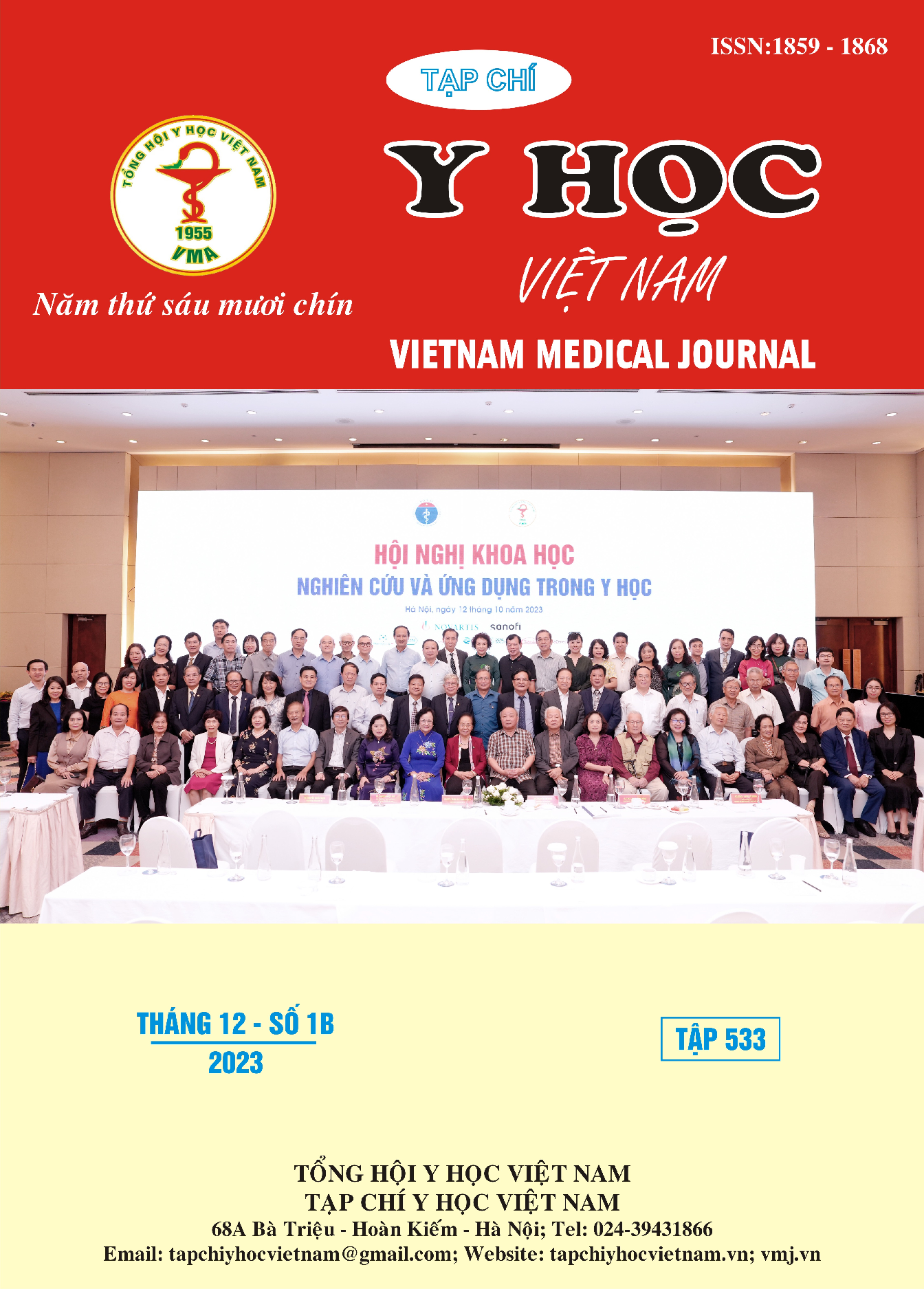RESULTS OF IN SITU DECOMPRESSION FOR FOR CUBITAL TUNNEL SYNDROME AT 108 MILITARY CENTRAL HOSPITAL
Main Article Content
Abstract
Objective: Results of In situ decompression for for Cubital Tunnel Syndrome at 108 military central hospital. Subjects and Method: Cross-sectional descriptive study. A study of 57 patients were compression of the ulnar nerve at the elbow, have been treated with In situ decompression at 108 Military central hospital from January 2019 to January 2023. Results: Of the 57 patients in the study, 15 patients were female (26.3%), with an average age of 48.7 ± 14.9 years (10-75 years). The left hand accounted for 49.1%, the right hand accounted for 47.4%, and both sides accounted for 3.5%. The average duration of illness is 8 months (3-15). Terminal time after surgery: 26.37 ± 14.29 months. Symptoms on the Quick DASH scale, BMRC, and 2-point differentiated test all showed significant improvement after surgery ≥6 months (p<0.05) compared to preoperative results. The low rate of near and distant complications accounted for 7.02%. Conclusions: Surgical treatment of ulnar nerve compression at the deep trochanter location by in-office decompression and insertion method gives good results, quick recovery time, and very few complications after the disease.
Article Details
Keywords
In situ decompression, cubital tunnel syndrome, decompressing the ulnar nerve around the elbow.
References
2. Li M., He Q., Hu Z. và cộng sự. (2015). Applied anatomical study of the vascularized ulnar nerve and its blood supply for cubital tunnel syndrome at the elbow region. Neural Regen Res, 10(1), 141–145.
3. Nakashian M.N., Ireland D., và Kane P.M. (2020). Cubital Tunnel Syndrome: Current Concepts. Curr Rev Musculoskelet Med, 13(4), 520–524.
4. Carlton A. và Khalid S.I. (2018). Surgical Approaches and Their Outcomes in the Treatment of Cubital Tunnel Syndrome. Front Surg, 5, 48.
5. Kelly B.J. và Hughes T. (2013). Treatment Options for Cubital Tunnel Syndrome. .
6. Wang Y., Sunitha M., và Chung K.C. (2013). How to Measure Outcomes of Peripheral Nerve Surgery. Hand Clin, 29(3), 349–361.
7. Schreuders T.A.R., Roebroeck M.E., Jaquet J.-B. và cộng sự. (2004). Long-term outcome of muscle strength in ulnar and median nerve injury: comparing manual muscle strength testing, grip and pinch strength dynamometers and a new intrinsic muscle strength dynamometer. J Rehabil Med, 36(6), 273–278.
8. Dützmann S., Martin K.D., Sobottka S. và cộng sự. (2013). Open vs retractor-endoscopic in situ decompression of the ulnar nerve in cubital tunnel syndrome: a retrospective cohort study. Neurosurgery, 72(4), 605–616; discussion 614-616.
9. Bacle G., Marteau E., Freslon M. và cộng sự. (2014). Cubital tunnel syndrome: comparative results of a multicenter study of 4 surgical techniques with a mean follow-up of 92 months. Orthop Traumatol Surg Res OTSR, 100(4 Suppl), S205-208.
10. Schmidt S., Kleist Welch-Guerra W., Matthes M. và cộng sự. (2015). Endoscopic vs Open Decompression of the Ulnar Nerve in Cubital Tunnel Syndrome: A Prospective Randomized Double-Blind Study. Neurosurgery, 77(6), 960–970; discussion 970-971.


